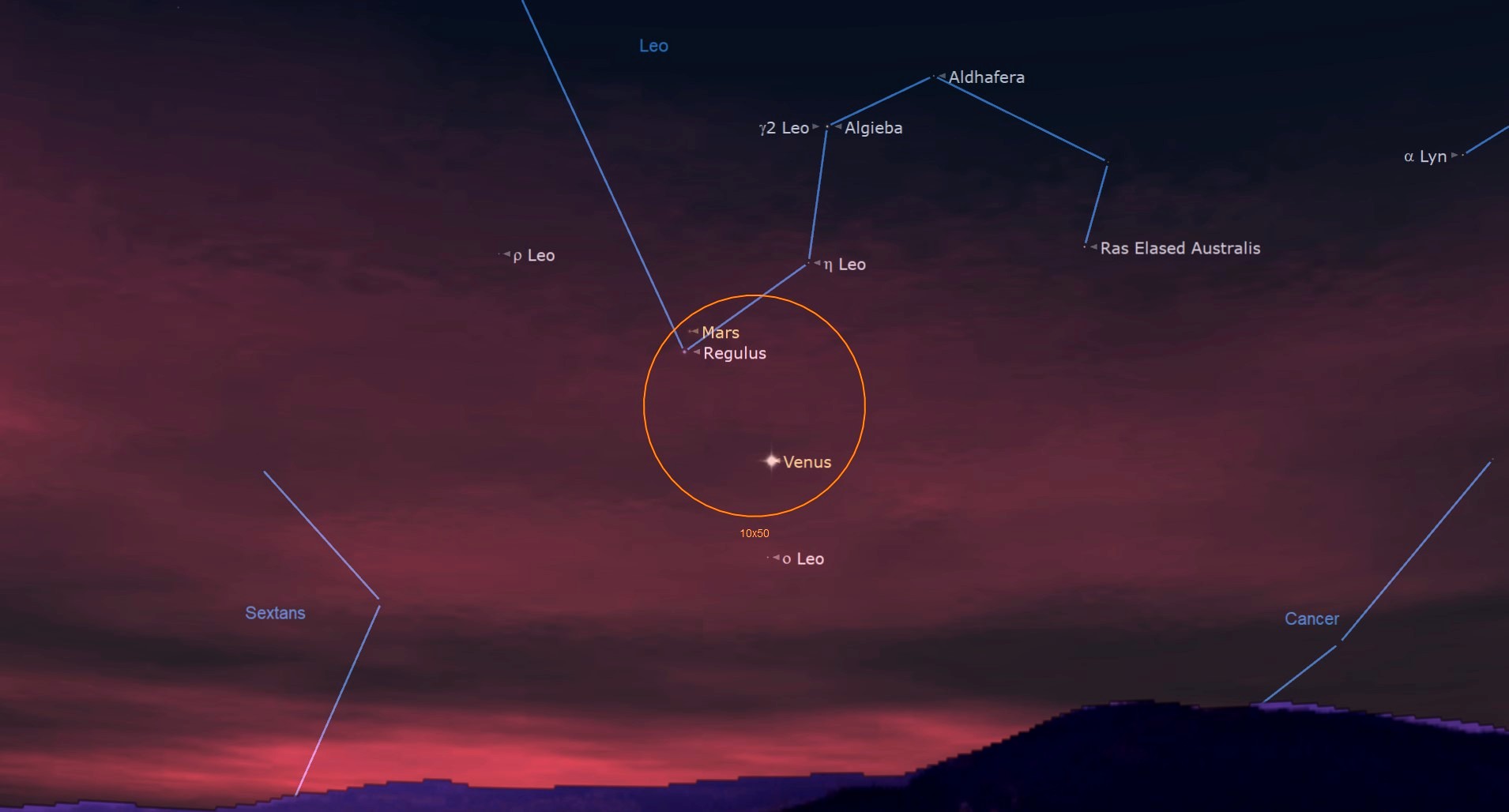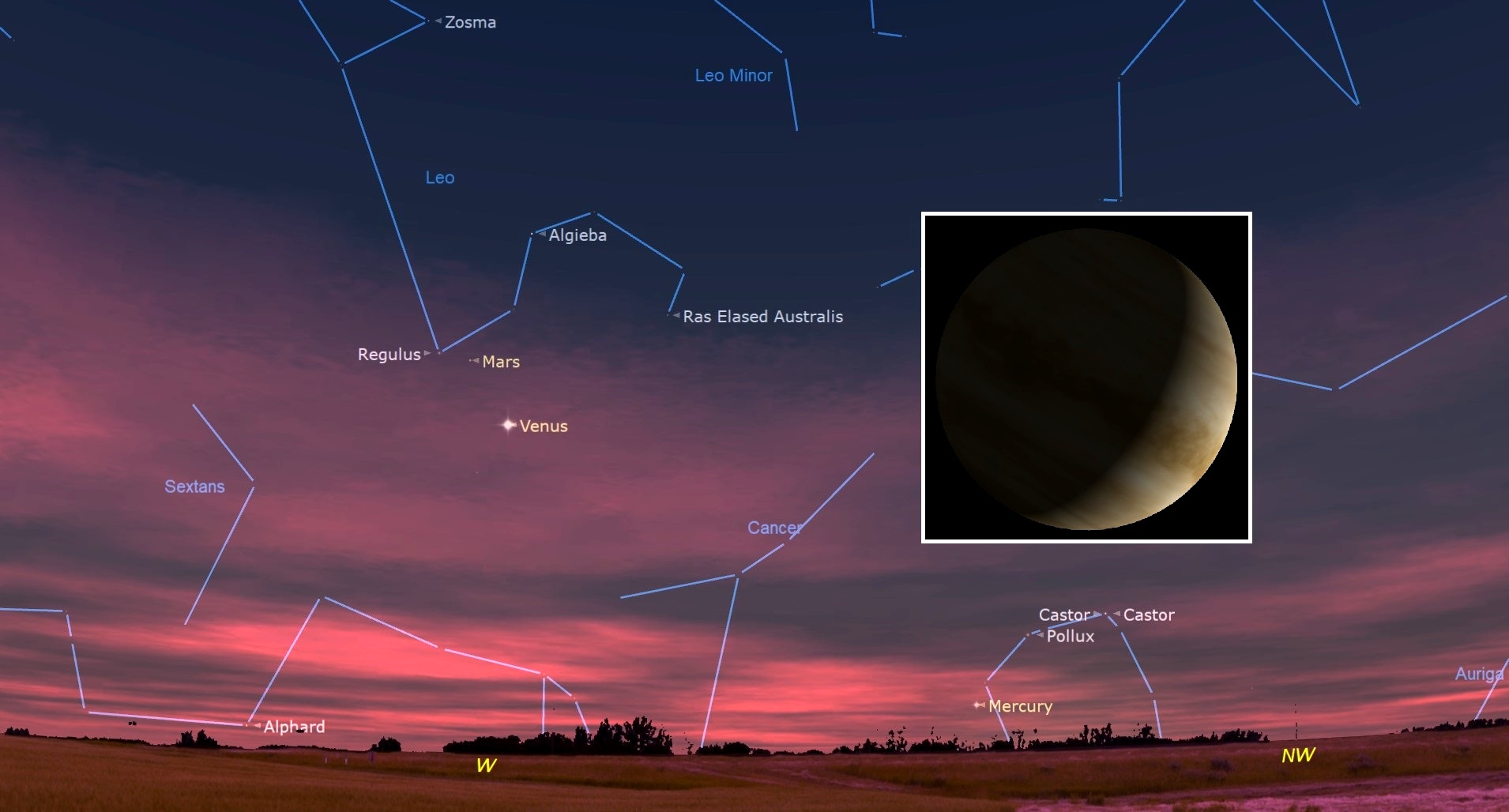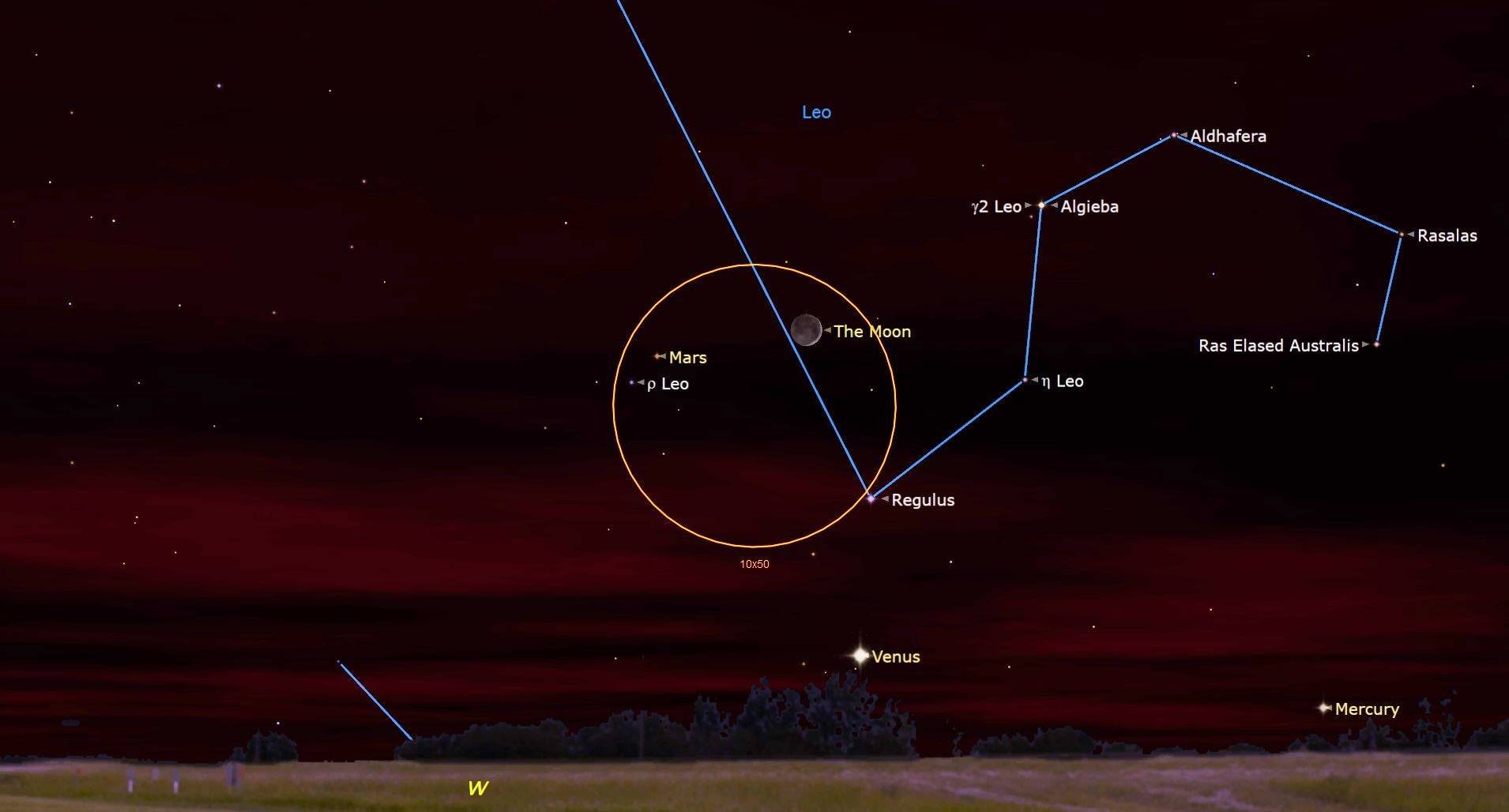Mars and Venus leave the night sky this month. Here's how to say goodbye

July marks the final month of evening visibility of two bright planets.
They are: Mars, which was so brilliant between Thanksgiving and Christmas of 2022 and has since diminished dramatically in brightness; and Venus, which has adorned our evening sky since late fall. Both are currently visible low near the western horizon about an hour after sunset.
We all know after a great theatrical show has concluded how the actors come out for a final bow. Well, in a way, we're nearing the end of a celestial show that has been going on for many months and the two main characters will soon be coming out to take their final bows.
And as a bonus, located in the immediate vicinity of these two planets this month, is the bright 1st-magnitude star Regulus in the constellation of Leo, the Lion.
Related: Night sky, July 2023: What you can see tonight [maps]
Dramatic end to the evening show

Looking for a telescope to see Mars, Venus or anything else in the night sky? We recommend the Celestron Astro Fi 102 as the top pick in our best beginner's telescope guide.
By far, the most brilliant of these three is beautiful Venus, now swiftly approaching the sun. In fact, it is sinking so fast toward the sunset horizon that toward the end of this month — in spite of its great brilliance — it too may become noticeably harder to view.
During the second weekend of July, Venus is setting about two hours after sunset; right about the same time that evening twilight is coming to its conclusion. But by July 23, this dazzling world will be setting just an hour after sundown and by month's end it will be setting only about 20 minutes after the sun.
Breaking space news, the latest updates on rocket launches, skywatching events and more!
This is certainly the month to follow Venus, Earth's "evil twin," with a telescope! Right now, it is swinging close to our Earth, overtaking us in the planetary race around the sun. At such times, Venus is the nearest to us that any major planet can ever come. Furthermore, it shows a larger apparent disk than any other solid body in the universe save for the moon.
July 7 marks the date of Venus's "greatest illuminated extent," the "compromise phase" between the time that Venus appears full but tiny, and when it appears almost six times larger but is just a hairline crescent. The greatest amount of illuminated surface area combined with a moderately large angular size makes Venus now appear truly dazzling, at an eye-popping magnitude -4.7; shining 25 times brighter than Sirius, the night sky's brightest star.
In fact, Venus appears so bright now that it can be seen easily with the naked eye in a deep blue, haze-free afternoon sky, if you know precisely where to look; it appears as a tiny white speck against the blue-sky background.
As July progresses, Venus continues to approach the Earth while appearing to curve back in toward the sun in our sky. It now appears as a big, beautiful crescent that can be glimpsed even in steadily held binoculars. On July 7, Venus stands 37 million miles (60 million km) from the Earth. Its disk appears 25% illuminated and about 35% larger in size than it did just one month ago.
Your best telescopic views will probably be in early twilight or even the daytime when it will be more clearly visible without its overwhelming light glare. Toward the end of July, will you be able to make out the crescent's cusp extensions? These are threadlike wisps of light extending beyond the crescent's points. Also, examine the cusps themselves; sometimes one appears slightly brighter or sharper than the other.
Mars meets Regulus
While Venus is going out in a literal blaze of glory, Mars in comparison, is sulking away, appearing as nothing more than a featureless little dot. At magnitude +1.7, it now glows only 1/27 as bright as it did last December. On July 7, Mars sits about 4 degrees to the upper left of Venus and in the nights that follow the two planets will slowly get farther apart.
But as Venus and Mars separate, Mars will be also be drawing noticeably closer to Regulus. On July 10, Regulus will have a close brush with Mars. As seen from latitude 40° north, the pair will set together just after the end of evening twilight.
While you might be able glimpse both star and planet with your unaided eyes, you'll really need binoculars to get the best views of this second magnitude planet passing just seven-tenths of a degree above the brighter Regulus (magnitude +1.4). Optical aid will show the striking contrasting colors of bluish white Regulus and orange-gold Mars, accentuated by the objects' proximity to each other.
Telescopes, however, will barely reveal Mars's tiny disk, now only about a fifth as wide as it appeared during the planet's close approach last December. During August, Mars will become lost in the sun's afterglow and will remain out of sight through the rest of the year.
The moon bid its own farewell
And finally, there is our nearest neighbor in space, the moon, which will interact with both planets and also with Regulus on the evening of Thursday, July 20. Be sure to get outside a half hour after sundown and look low down toward the western horizon. Look first for the slender crescent moon, only 9% illuminated in the twilight sky; it will be standing 8 degrees almost directly above Venus.
This, incidentally, will mark the last gathering of these two brightest objects of the night sky visible in evening skies this year. Regulus, meanwhile, will lie almost directly between them. And sitting about 4 degrees to the left of the moon will be Mars. Again, binoculars will be beneficial in sighting all of them.
If you are hoping to catch a look at one of these celestial events in July, our guides to the best telescopes and best binoculars are a great place to start.
And if you're looking to snap photos of the planets or night sky in general, check out our guide on how to photograph the moon, as well as our best cameras for astrophotography and best lenses for astrophotography.
Joe Rao serves as an instructor and guest lecturer at New York's Hayden Planetarium. He writes about astronomy for Natural History magazine, the Farmers' Almanac and other publications.

Joe Rao is Space.com's skywatching columnist, as well as a veteran meteorologist and eclipse chaser who also serves as an instructor and guest lecturer at New York's Hayden Planetarium. He writes about astronomy for Natural History magazine, Sky & Telescope and other publications. Joe is an 8-time Emmy-nominated meteorologist who served the Putnam Valley region of New York for over 21 years. You can find him on Twitter and YouTube tracking lunar and solar eclipses, meteor showers and more. To find out Joe's latest project, visit him on Twitter.


